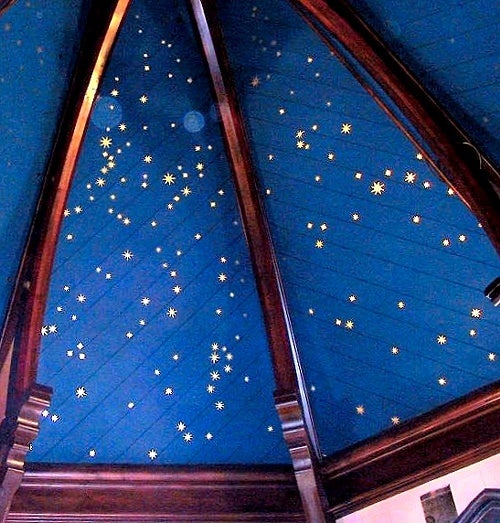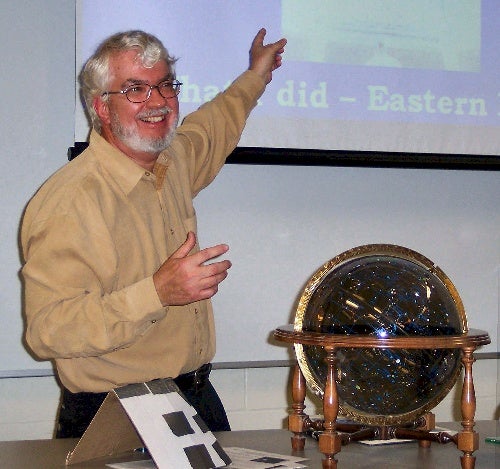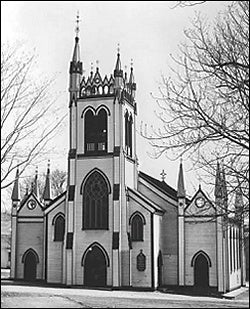When workers at St. John’s Anglican Church in Lunenburg, Nova Scotia, began repairing the historic building, they faced a dilemma. Photographs showed the church’s ceiling, which was badly damaged in a 2001 fire, used to be decorated with hundreds of painted stars. But was it a random pattern, or was it an accurate portrayal of the night sky?
That’s when astronomer David Turner was called in. As he examined old black-and-white photos of the church’s interior, he saw patterns that seemed familiar — and yet somehow not quite right. “I love a mystery as much as the next guy, and this was certainly a mystery,” Turner says.
The ceiling star patterns, located above the chapel at the east end of the church, showed only a portion of the sky. The most obvious constellation was Perseus, but it was placed high in the east, a location it can never occupy today. From Nova Scotia, Perseus is nearly “circumpolar,” which means it lies near the North Celestial Pole. Perseus skims the northeastern and northwestern horizons rather than completely rising or setting.
Polaris lies near the North Celestial Pole, so all other celestial objects appear to revolve around it. But because of a phenomenon known as precession of the equinoxes, Polaris hasn’t always had this privileged place. Precession causes the North Celestial Pole to move. Much as a spinning top slowly shifts the direction of its spin, the wobble of Earth’s spin axis causes the North Celestial Pole to trace a path across the sky.
If we turn back the calendar far enough, Turner explains, Perseus would have been circling a different spot on the celestial sphere and would have arced differently through the sky — differently enough, he argues, that it would have been visible high in the eastern sky, as depicted on the church ceiling.
The church ceiling, he concludes, shows how the sky would have appeared at sunset to a viewer at the latitude of Lunenburg who was facing east on December 24 — Christmas Eve — two millennia ago.
The wooden church was built in 1753, but historians believe the ceiling was painted around 1900. Although Turner used modern computer software, he says the people who painted the stars in the first place could have worked out the patterns using low-tech methods. Precession has been understood for thousands of years, Turner says, and the artists would have had easy access to accurate star charts. Working out the relative positions of the constellations with respect to the horizon, he says, would have been fairly simple.
Turner gave the star patterns to the artists restoring the church. After painting the ceiling boards a deep blue, they painstakingly added the stars in gold leaf. “It’s spectacular now,” Turner says. The star-studded ceiling is “the first thing you notice when you walk into the church.”












